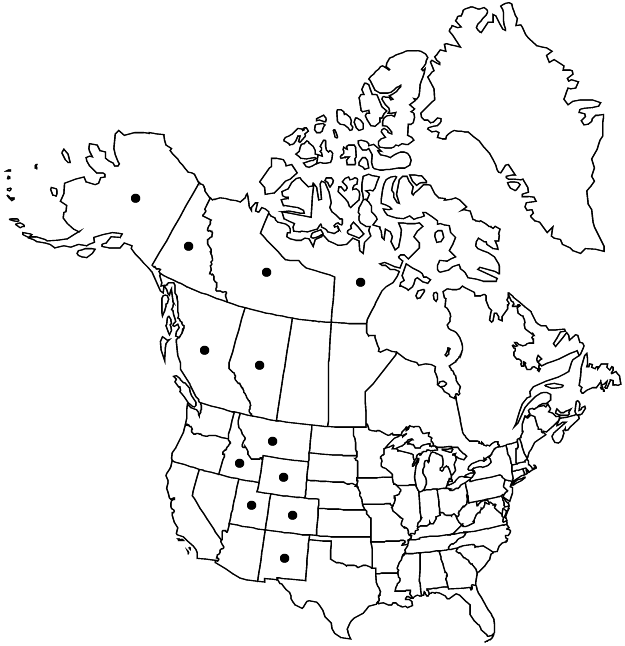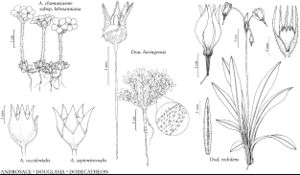Difference between revisions of "Androsace chamaejasme subsp. lehmanniana"
Fl. Alaska Yukon 8: 1280. 1948 ,.
imported>Volume Importer |
imported>Volume Importer |
||
| Line 79: | Line 79: | ||
|publication year= | |publication year= | ||
|special status=Illustrated;Endemic | |special status=Illustrated;Endemic | ||
| − | |source xml=https:// | + | |source xml=https://bitbucket.org/aafc-mbb/fna-data-curation/src/2e0870ddd59836b60bcf96646a41e87ea5a5943a/coarse_grained_fna_xml/V8/V8_532.xml |
|genus=Androsace | |genus=Androsace | ||
|species=Androsace chamaejasme | |species=Androsace chamaejasme | ||
Latest revision as of 22:44, 5 November 2020
Plants perennial, somewhat slender, forming loose or dense mats. Leaves in multiple rosettes; petiole absent; blade ligulate to oblong (moderately dimorphic between inner and outer layers of rosette), 3–15 × 3–4 mm, base obscurely narrowing to stem, margins ciliate, surfaces hirsute to glabrescent, hairs simple. Scapes usually 1, 2–7(–10) cm, sparsely hairy. Inflorescences 3–6-flowered; involucral bracts lanceolate to ovate, relatively broad. Pedicels erect, slender to moderately thick, ± equal, 0.5–1.5 cm. Flowers: calyx broadly campanulate to subglobose, obscurely ridged, 3–5(–8) mm, lobes erect, ovate-lanceolate, apex ± obtuse; corolla (fading to pink in age), tube slightly shorter than calyx, limb 3–4 mm diam. Capsules ± equaling calyx, ca. 3 mm. 2n = 20.
Phenology: Flowering summer.
Habitat: Rocky, open habitats on tundra
Elevation: 0-4000 m
Distribution

Alta., B.C., N.W.T., Nunavut, Yukon, Alaska, Colo., Idaho, Mont., N.Mex., Utah, Wyo.
Discussion
Subspecies chamaejasme occurs across Eurasia; it differs from subsp. lehmanniana in having distinctly trimorphic leaf rosettes (outer leaves white-membranous and linear-triangular, the middle green and linear to subspatulate, the inner green and lanceolate). In subsp. lehmannianna, trimorphism is not noticeable, although older outer leaves may differ somewhat from inner younger ones in size and dentation; otherwise the taxa are indistinguishable. Rocky Mountain representatives of Androsace chamaejasme have been treated as A. carinata or A. chamaejasme subsp. carinata on the basis of a prominently keeled midrib on the leaf blade. Although this characteristic can often appear on plants growing in exposed sites on the tundra in the Rocky Mountains and even as far north as Alaska and Canada, it disappears when these carinate plants are removed to transplant gardens in protected sites. In sheltered sites on the tundra and in transplant gardens at low elevations, leaves become open and spreading to almost flat, thus losing the carinate keel that theoretically distinguishes the Rocky Mountain subspecies. Subspecies andersonii, distinguished by more fleshy leaves, prominent cilia, and slightly saccate bracts, occurs around Kotzebue, Alaska. These characters vary considerably in material from that region and transitional forms occur even within populations there. This is a minor variant well within the range of morphology seen throughout the North American representatives. All North American individuals are placed in subsp. lehmanniana, representing a widespread arctic-alpine distribution of A. chamaejasme from arctic North America to the Rocky Mountains.
Selected References
None.
